Demystifying the stone ruins of pre-colonial Africa
The architectural heritage of pre-colonial Africa includes numerous stone monuments and cities whose construction and function are sufficiently documented in the historical record.
The sandstone temples, palaces, and fortifications of ancient Kush and medieval Nubia appear in multiple internal and external accounts of the region. So too do the stone palaces and churches of Aksum and medieval Ethiopia, as well as the mosques and city walls of the sultanates of the northern Horn of Africa and southern Somalia.
In East Africa, local chronicles and external descriptions of the Swahili coast, Comoros, Mozambique, and northern Madagascar often mention the presence of coral-stone houses, palaces, and mosques that characterized the region's urban architecture. In West Africa, local chronicles and later external accounts describe the drystone towns of medieval Ghana and Gao, as well as the stone-walled cities and forts from Mali to northern Nigeria.
Distribution of African stone ruins and cities, map by Author.
The temple complex of Musawwarat es Sufra in Sudan.
The Dungur palace at Aksum, Ethiopia.
Houses at Songo Mnara, Tanzania.
Ruins of Wadan, Mauritania.
In other parts of the continent, descriptions of stone settlements come exclusively from external accounts and are often fragmentary.
The Zimbabwe tradition of stone ruins, which covers an area about the size of France and extends into eastern Botswana and South Africa, was first described in a few Portuguese accounts from the 16th century before the ruins were “re-discovered” on the eve of colonialism.
The subsequent debate about the builders of the ruins lent them an enigmatic quality, that came to typify Africa's pre-historic stone structures.
Similar collections of African stone ruins for which there are few historical records of their construction include the ruins of South Africa's high Veld and the neighboring Bokoni ruins, the west African Neolithic sites of Tichitt, the medieval walled towns of Loropeni on the Ghana/Burkina Faso border, the DGB sites of Cameroon, and the stone ruins of western Kenya.
Valley ruins, Great Zimbabwe.
The historical enigma of these African stone ruins has since been solved by combining archaeological research with oral traditions. Studies of the material remains found at these sites have allowed researchers to reconstruct their history by establishing the chronology of the sites’ construction, uncovering the social practices of their occupants, and even identifying the builders of the ruins.
Most of these ruins have thus become the subject of intense scholarly interest and are considered central to the historiography of their respective regions. However, a few of these sites, such as the stone ruins of western Kenya, have not been sufficiently researched despite their historical significance in the emergence of complex societies in the African Great Lakes region.
Archaeological surveys in the southwestern region of Kenya uncovered more than 138 stone-walled ruins containing 521 structures, the largest of which is the UNESCO world heritage site of Thimlich Ohinga whose walls stand at a height of over 4meters.
The earliest recorded accounts of the region bordering the northeastern shores of Lake Victoria describe a land dotted with numerous walled settlements, often compared to forts, with towns and villages surrounded by deep moats and high walls. An estimated 500 forts were built in this region during the pre-colonial period, and some of the forts later became the site of intense battles with colonial forces when they were besieged and destroyed in 1895.
The stone ruins of Thimlich Ohinga and the forts of western Kenya are the subject of my latest Patreon article.
Please subscribe to read more about it here:


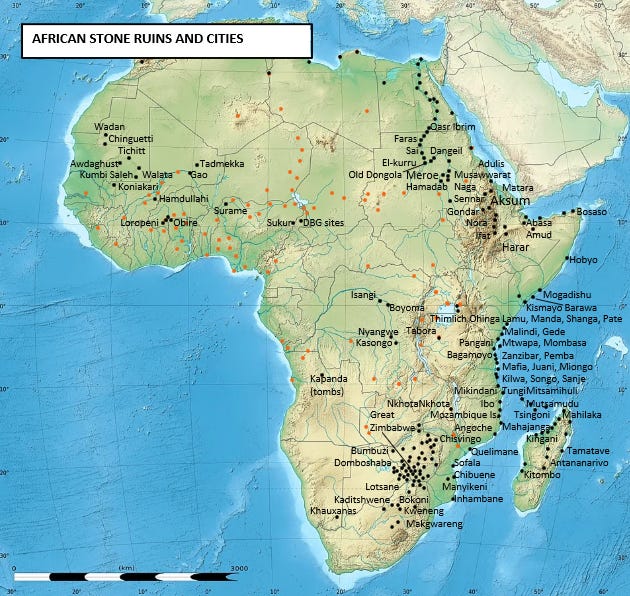


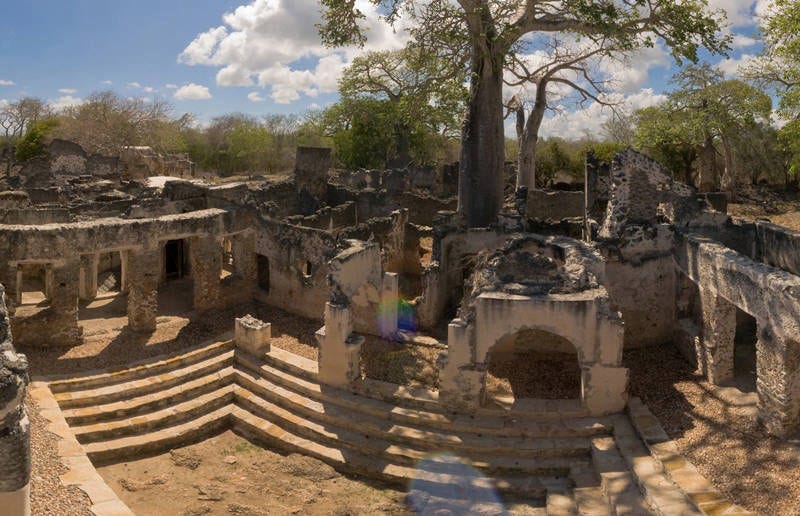


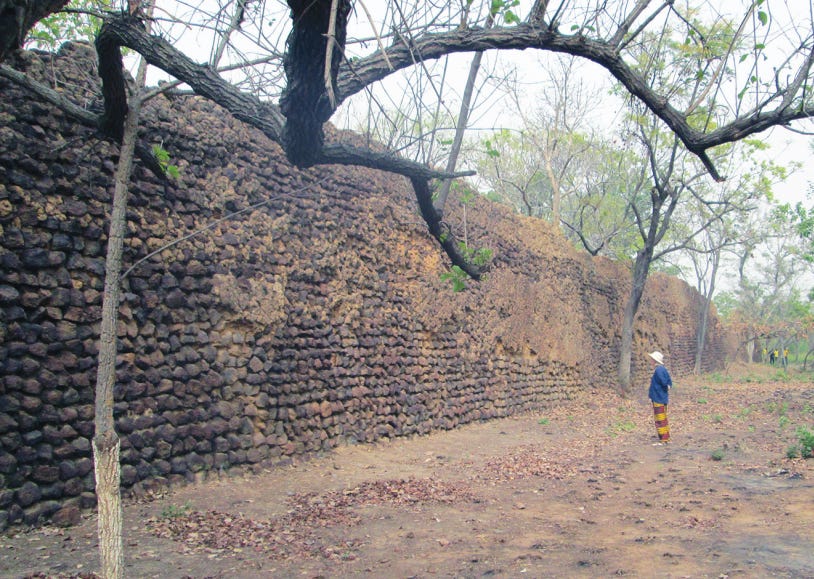
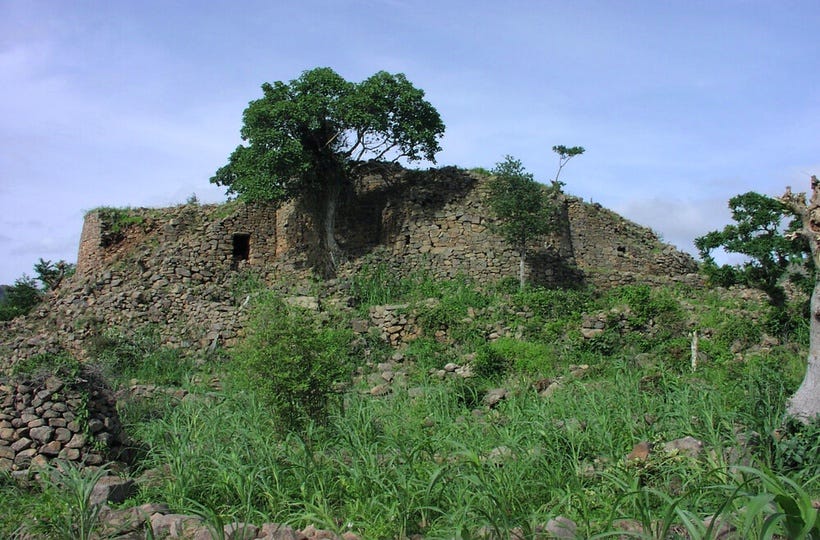
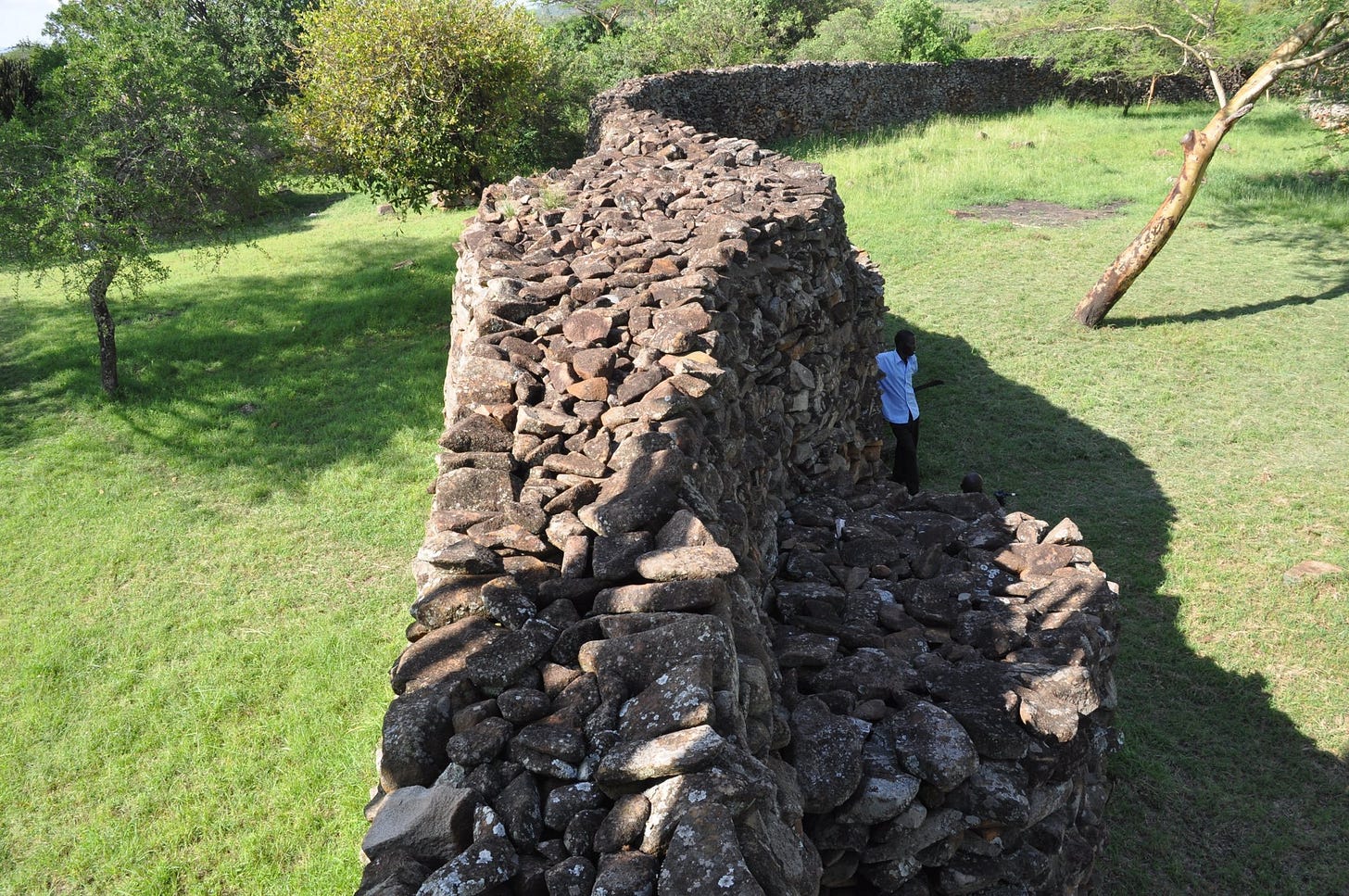

Im really curious about the many other stone ruins in Africa that are shown on the map. Also what do those orange dots mean? They are not named. Is there somewhere were I can see a full list of names of the ruins?
Not that it matters, ignoring the Swahili coast, & berber polities in west Africa like Takedda that used red stones to build the houses, apart from the unidentified capital of Ghana (whose houses were built with stones (schist stones?) & acacia wood) & the historical town of Mina (Edina), whose houses were built with rock stones, do you know of any other city/town in West/central/east Africa that was completely built with stones? I know there were cities/towns that employed stones in erecting their forts, walls, castles & palace residences, duplexes, mosques, etc (like Birni Ngazargamu), but they also employed bricks & adobe materials. I don't have those in mind.